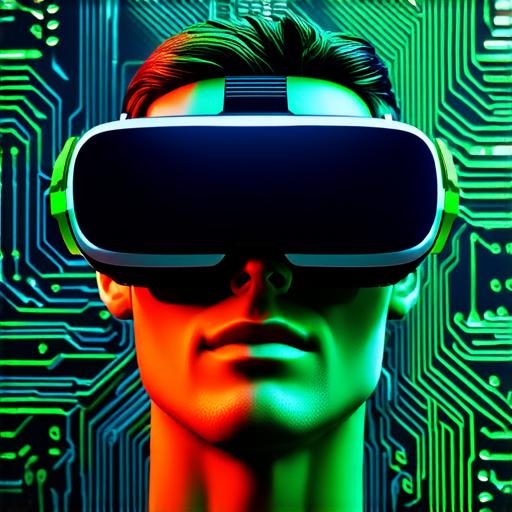Virtual reality (VR) is a technology that simulates a three-dimensional environment in a computer-generated world. The purpose of virtual reality is to create an immersive experience for users, allowing them to interact with and explore the virtual environment in a way that feels like being there in real life.
Functionality of Virtual Reality
The main function of virtual reality is to provide an interactive and engaging experience for users. This is achieved through the use of specialized hardware and software that track the movements of the user’s body and adjust the virtual environment accordingly.
One of the key components of VR is a head-mounted display (HMD), which is worn on the head to provide a 360-degree view of the virtual environment. The HMD typically includes sensors that track the movement of the user’s head, allowing them to look around and interact with objects in the virtual world.
Another important component of VR is motion tracking technology, which uses sensors placed throughout the room or space where the user is located to track the movement of their body. This allows the virtual environment to adjust to the user’s movements, making it feel like they are actually moving through the virtual world.
In addition to motion tracking and HMDs, VR also relies on advanced graphics technology to create a highly immersive and realistic experience for users. The virtual environment is typically rendered in high-resolution, with textures and lighting effects that make objects and environments look and feel like the real world.
Applications of Virtual Reality
Virtual reality has a wide range of applications across a variety of industries, including gaming, education, healthcare, and entertainment. The immersive and interactive nature of VR makes it an ideal platform for creating engaging and memorable experiences that can help users to learn, explore, and interact with the virtual world in new and exciting ways.
In gaming, VR provides a highly immersive and interactive experience that allows players to feel like they are truly part of the game world. This has led to the development of a variety of VR games that offer unique and engaging gameplay experiences.
In education, VR is being used to create simulations that allow students to learn about complex concepts and subjects in an immersive and interactive way. For example, medical students can use VR to simulate surgeries, while history students can explore ancient civilizations and historical events in a virtual environment.
In healthcare, VR is being used to provide patients with a more engaging and effective form of therapy. For example, patients recovering from injuries or illnesses can use VR to simulate real-world activities, helping them to regain their mobility and independence.
In entertainment, VR is being used to create immersive and interactive experiences for consumers, such as virtual concerts and movies that allow users to feel like they are part of the action.

Conclusion
Virtual reality is a powerful technology that has the ability to transform the way we interact with the world around us. The main function of virtual reality is to provide an immersive and interactive experience for users, allowing them to explore and interact with a virtual environment in a way that feels like being there in real life. With its wide range of applications across a variety of industries, VR has the potential to revolutionize the way we learn, explore, and interact with the world around us.
